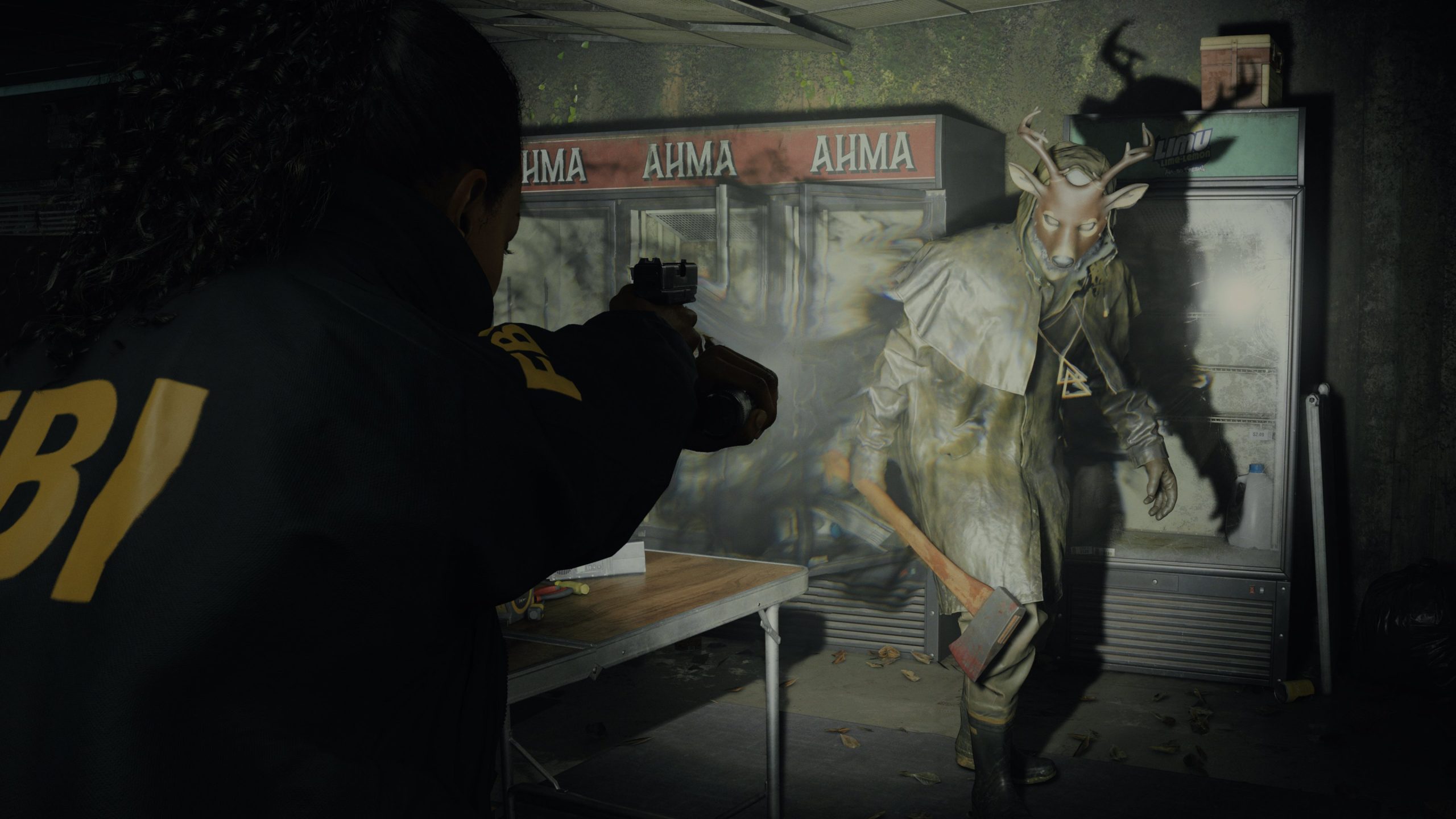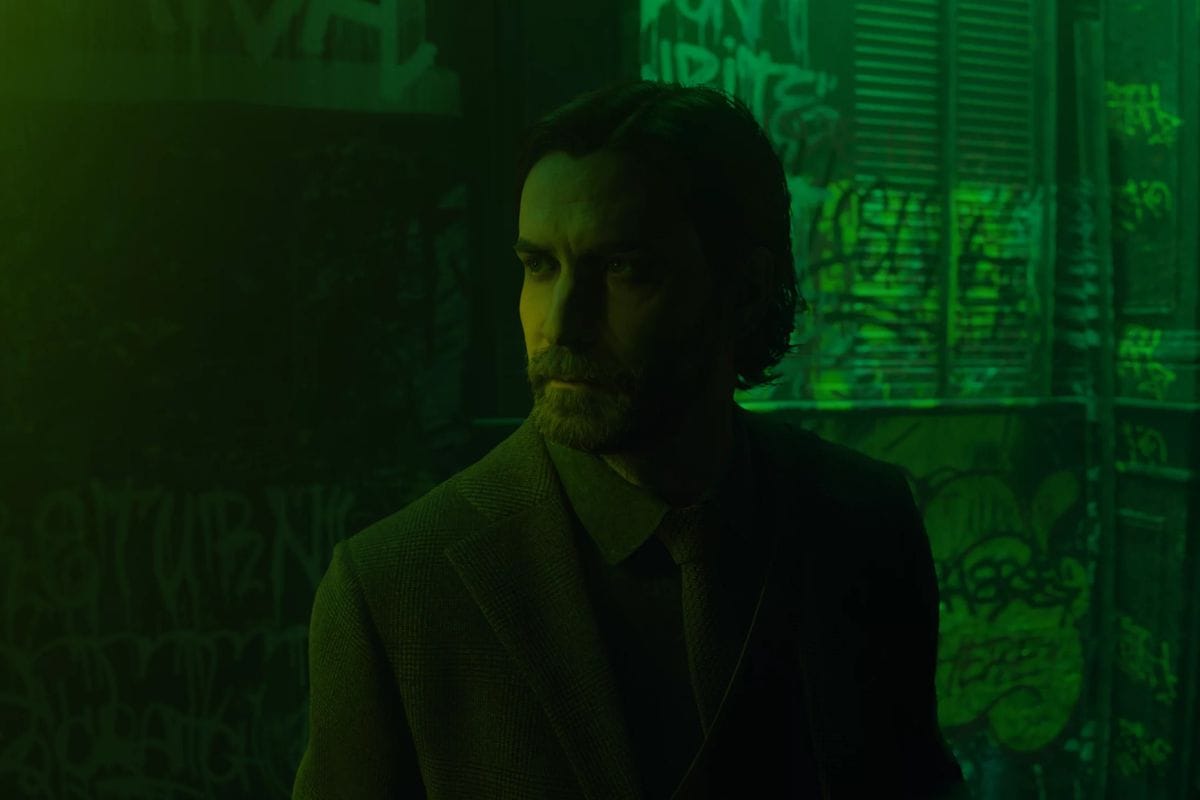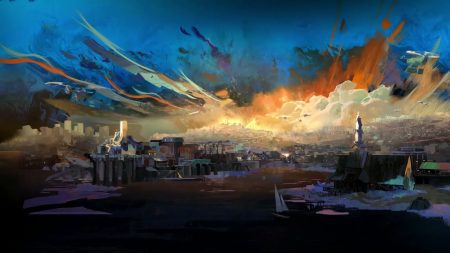Alan Wake 2 is poetic. Developer Remedy Entertainment has crafted not only an excellent sequel to a now 13-year-old game, but the best horror game in nearly a decade.
Alan Wake was a touchstone game for me. The 2010 release followed its titular writer as he fought supernatural entities known as the Taken in the fictional town of Bright Falls and the nearby Cauldron Lake of the Pacific Northwest. While searching for his missing wife, Alan experiences blackouts and visions from his own novels.
Remedy never hid its Stephen King influence, from the subtle elements of horror to the protagonist being a troubled writer. The game even opened with a Stephen King quotation: “Nightmares exist outside of logic, and there’s little fun to be had in explanations; they’re antithetical to the poetry of fear.”
On paper, Alan Wake 2 starts where we might expect a mystery novel, true crime podcast, or horror movie to begin.
After a time-bending third-person shooter (Quantum Break, 2016) and a mind-melting action game (Control, 2019), I didn’t know what to expect from the studio’s “first foray into the survival horror genre.” Alan Wake 2 proves to be well worth the decade-plus-long wait and demonstrates Remedy’s maturity in storytelling and crafting atmosphere.

Just Another Detective Story
Tell me if you’ve heard this detective story before: Two FBI agents arrive in a small town after a brutal murder. The suspects? Well, rumors swirl around the small town of Bright Falls that a murder cult—the Cult of the Trees—stalks the woods and performs ritualistic murders while wearing deer masks.
On paper, Alan Wake 2 starts where we might expect a mystery novel, true crime podcast, or horror movie to begin. The trope-heavy opening hours feel a little like the early episodes of HBO’s True Detective (2014), except instead of Matthew McConaughey and Woody Harrelson, players approach the case as Saga Anderson (voiced by Melanie Liburd) and her partner Alex Casey (voiced by Sam Lake and James McCaffrey).
Remedy revels in these tropes, providing the occasional wink and nod at the knowing player. Casey and Anderson occasionally take synchronized sips of coffee, creating pregnant pauses between interrogations or their bantering like work friends who have known each other for years. As Saga Anderson, players roam the woods and communities surrounding Cauldron Lake, gather evidence, and fight against mysterious figures haunting the outskirts of town. You know, typical video game detective stuff. But Saga’s true crime investigation quickly turns to horror as the murder case turns supernatural.

A Place of Her Own
Saga possesses a detective superpower: her “mind place.” Remedy transforms the concept of the mind place—think Sherlock Holmes—into an incredibly utilitarian gameplay mechanic. Saga’s mind place resembles a cabin in the woods—complete with logs, a fireplace, and a mounted deer head.
Within the mind place, players interact with two important narrative organizing tools: Saga’s Case Board and her Profiling desk. These two interactive spaces help visualize the connections between the game’s complex story elements. The Case Board provides a tactile organization tool, where handwritten notes and polaroids can help keep track of case developments, evidence, potential leads, as well as specific collectibles: Alex Casey Lunch Boxes, Cult Stashes, and Nursery Rhymes. The Profiling table similarly reveals other characters’ intentions and motivations.
Saga’s mind place makes tangible elements of modern games often obscured or abstracted by endless menus. Whereas in past Remedy games, readable collectibles were locked behind and curated by menus, players can interact with Alan Wake 2’s radio shows, television commercials, and manuscript pages while walking around the mind place. They can also be viewed in the game’s menus, but being able to return to the various multimedia programs found in-game in a specific space brings these elements to life. They also allow us to reminisce about physical media and the technology that makes them possible. Within the mind place, players will also upgrade Saga’s guns and access found map pieces to better navigate the game world.
Saga’s mind place reimagines many aspects of modern video game menus—occasionally feeling like a glorified menu itself. Entering the space does not pause Saga in Bright Falls. Casey and other folks will sometimes comment on Saga’s long pauses, and enemies violently pull her from it when they attack.
Agent Saga Anderson is an excellent protagonist, but her story is only half of what gamers will experience in Alan Wake 2.

The Writer and the Dark Place
So what about Alan Wake, the game’s titular writer? Players haven’t heard from him since Control’s 2020 AWE DLC and haven’t played as him in an original game since 2012’s Alan Wake: American Nightmare—which according to Sam Lake is probably canon. As far as Bright Falls’ citizens are concerned, the writer dove into Cauldron Lake in 2010 and was never seen again. Alan traded places with his wife Alice Wake in the Dark Place, saving her and trapping him.
Players resume the role of Alan after a particular moment in Bright Falls. I won’t spoil the interaction here, but it is the first of many narrative connective tissues bridging Bright Falls and the Dark Place. As Alan, players navigate the Dark Place, a space created by the Dark Presence resembling the protagonist’s former home of New York City.
Alan’s story becomes the character’s and studio’s autofiction, a fictional autobiography that ruminates and reflects on the connections between the artist’s past stories as well as their role as storytellers.
The Dark Place morphs and transforms, feeding on the creativity of the artist inhabiting it. Alan’s early sequences are terrifying, beautifully rendered, and surreal. They unfold like an arthouse film, playing with genre in ways that few modern games would dare. If Saga Anderson’s story feels like a reflection on detective stories, then Alan Wake’s chapters meditate on what it means to be a writer and storyteller while challenging what it means to play a video game narrative.
The Remedy In-Game Universe
Of course, Remedy connects it all back to the studio’s larger connected universe. The shared elements and crossovers never hinder the player’s experience; rather, knowing the studio’s oeuvre—including currently non-connected universe games like Max Payne and Quantum Break—enhances the experience. Alan’s story becomes the character and studio’s autofiction, a fictional autobiography that ruminates and reflects on the connections between the artist’s past stories as well as their role as storytellers.
Remedy constantly plays with genre and media in its horror story. Alan Wake 2’s live-action moments present one of its most impressive genre-bending tools and most visually recognizable forms of genre/media play. Remedy has experimented with live-action segments in games before, such as showing in-game television programs in live-action instead of rendered in-engine. In its most narratively experimental, Remedy utilized this style as a structural tool in 2016’s Quantum Break; they interlaced live-action episodes that were determined by choices made within game sequences.
Alan Wake 2 folds these live-action moments into the story in a way that disrupts and discomforts, and it builds on Remedy’s story universe and legacy.

Stay in the Light
Alan Wake 2 takes the gameplay elements of its predecessors’ ideas to the next level. Like Saga’s gameplay, Alan will explore, fight, and run from darkness-possessed enemies, the Taken. While their arsenals differ, the protagonists’ play styles are similar. Similar to the first game and Control: AWE, both characters will use light to dispel the darkness protecting enemies before attacking them with more traditional weapons. The dodge button, flares, and health items become life savers in both the wilderness of Bright Falls and the urban corridors of the Dark Place.
Light protects and reveals. It sheds away the darkness manifested by the Dark Presence and the Taken. Saga and Alan will also find safety under the light of lamp posts and in the safe rooms scattered throughout the two realities. Shining lights on certain surfaces will reveal directions to secrets or keys to puzzles. Saga also has to use light to fight back during the Alan Wake 2’s boss fights.
This sequel is also an experimental narrative that challenges not only how we think about video games but stories and the fictions we tell ourselves about how they are created.
Remedy also relishes light in the environment design. Light reflects brilliantly on the dry and wet surfaces of the game. Alan Wake 2 is a visual and aural treat of a nightmare. The dream-like spaces of the Dark Place and eerily realistically-rendered forests surrounding Bright Falls are a feast for the eyes peering between the player’s fingers. The sounds of these spaces invoke a similar haunting atmosphere. This is a game to play with headphones to best capture every twig snapping under Saga’s feet or the whispering threats of Taken.
The music organizing the game is incredible. Each chapter announces its end, much like the episodic structure of Alan Wake, with a dream-like screen that feels like peering through the waves of Cauldron Lake, along with a chapter-end song. Players can skip these songs, but they are phenomenal additions that enhance the overall experience.

Final Thoughts
At a certain point, players can switch between protagonists by switching realities in the safe rooms. The two realities—Alan in the Dark Place and Saga in Bright Falls—present two sides to an evolving narrative. Like any good horror story, Remedy balances theirs with more personal stories of the protagonists and the supporting cast. The stories are independent of one another, up until a certain point. Core content can’t be missed, but collectibles can. This heightens the drama and tension, making players always wonder what’s on the other side.
The first Alan Wake could have been a Stephen King story. Alan Wake 2 doesn’t shy away from some of this influence, but this is firmly Remedy’s story—both their postmodern detective thriller and their writer’s nightmare. Alan Wake 2 is a horror story with every jump scare and unnerving moment. But it’s not just a horror story. This sequel is also an experimental narrative that challenges not only how we think about video games but stories and the fictions we tell ourselves about how they are created.
Score: 9.5/10
Alan Wake II, developed by Remedy Entertainment and published by Epic Games, was released on October 27, 2023, for PlayStation 5, Xbox Series X/S, and PC. MSRP: $59.99 for console and $49.99 for PC.
Clint is a writer and educator based out of Columbus, OH. You can often find him writing about Middle English poetry, medieval games, or video games. He just finished a PhD in English at the Ohio State University. You can find his academic and public work at clintmorrisonjr.com.










